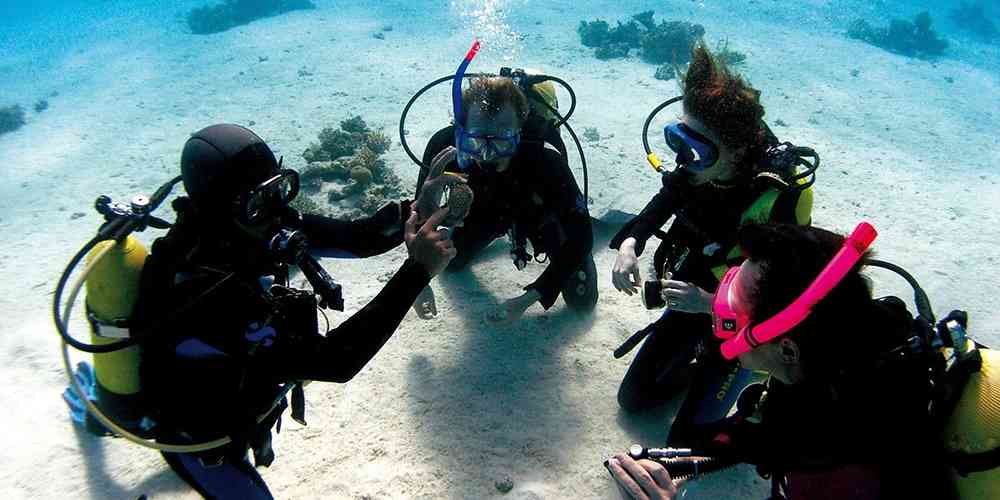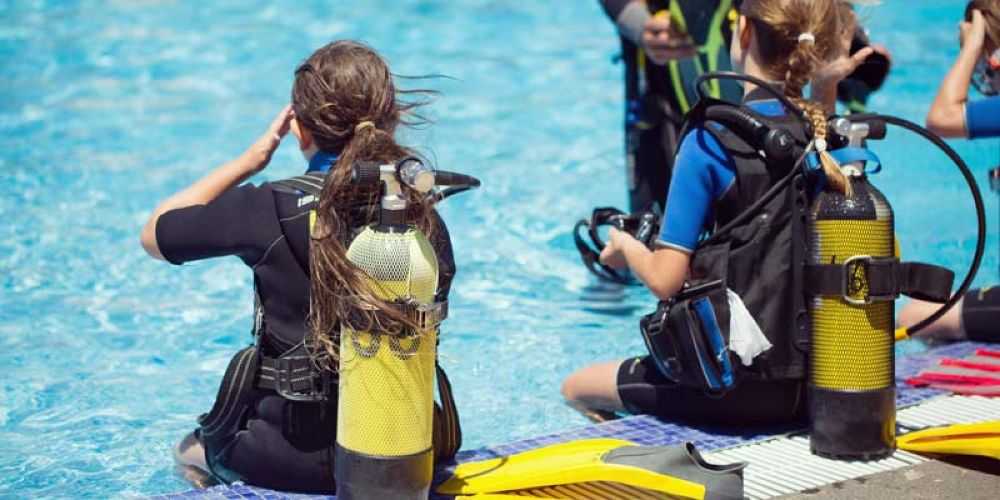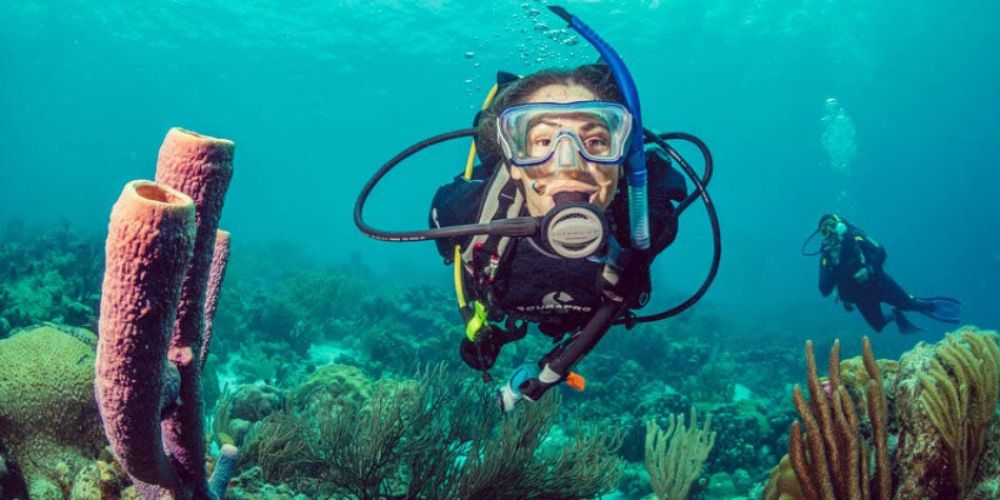Learning to dive as a family lets you explore all of the world’s oceans and gives you the privilege of remarkable underwater encounters with everything from humpback whales to pygmy seahorses. Apart from the wonder and excitement of meeting fish, turtles, starfish, sea-slugs and stingrays, being underwater is an exercise in meditation and in today’s hectic world, that’s as good a reason as any to start learning to dive with kids.
Kids can start learning to dive from age eight
- Learning to dive from the age of eight, the PADI system allows children to become “bubblemakers” on a pool-based course that familiarizes them with using scuba equipment and helps them gain confidence.
- Learning to dive from the age of 10 they can dive in open water down to a maximum depth of 40 ft, but only when accompanied by a PADI professional or a certified parent or guardian.
- Learning to dive after the age of 12 they can dive to 70 ft, accompanied by a certified adult.

Risk factors in learning to dive

Where to start learning to dive?

Essential equipment for learning to dive

The lowdown on learning to dive
To make learning to dive as a family successful there are some essential rules to follow. First, only you can judge whether your child is ready to try diving. The first step is to get your child into a swimming pool with an instructor so they can try it out, an exploratory experience to see how they handle the equipment, and how controlled they are when they swim around. Learning to dive with your kids is fun, but if you’re a first time diver yourself, think about taking some adult lessons – the more confident you are the more secure your children will feel about learning to dive themselves.
Want to know more about learning to dive in Florida? Check out Florida road trips mapped out for families And don’t forget to follow Family Traveller on Instagram and Facebook and share your travel plans with us – or just say ‘hi’.

